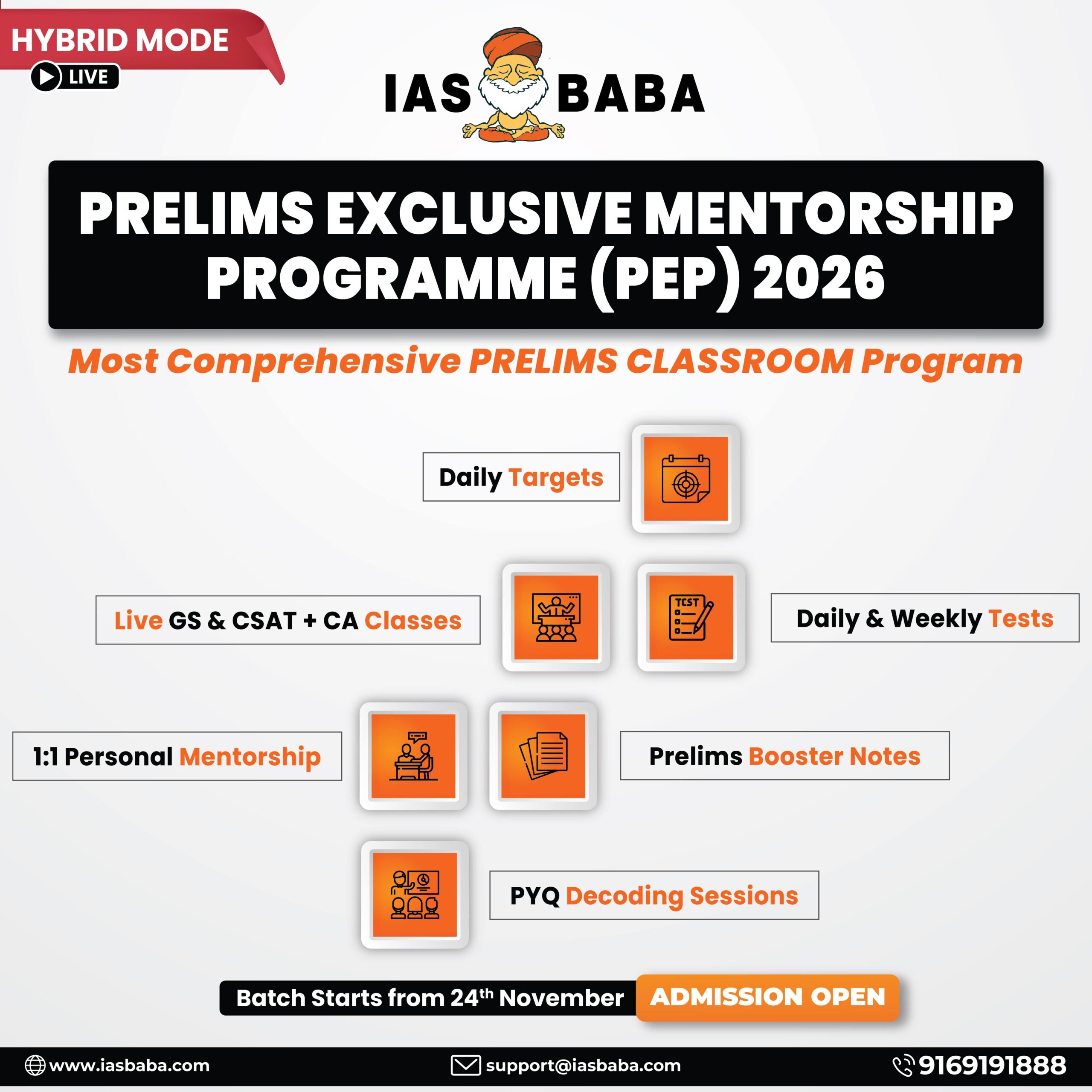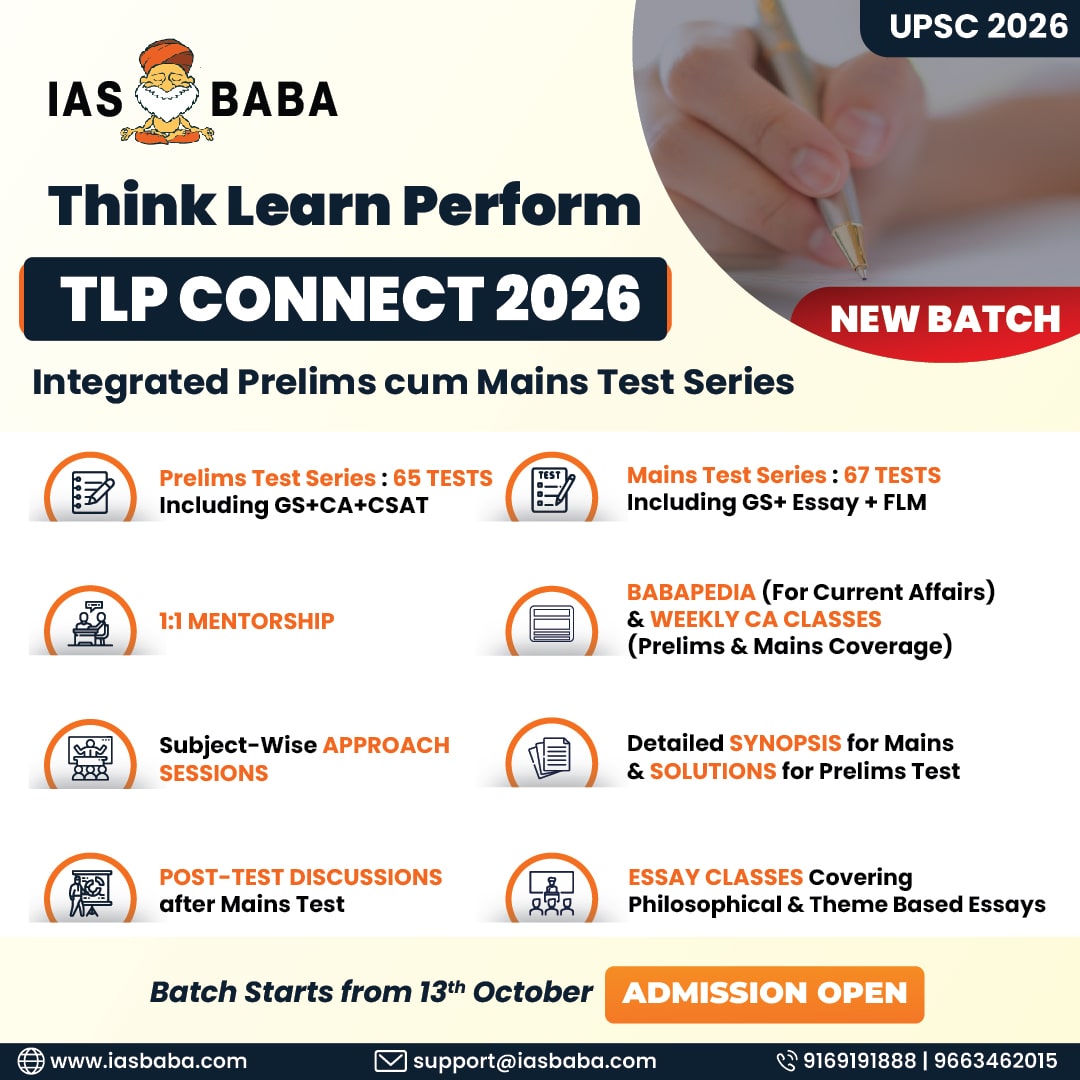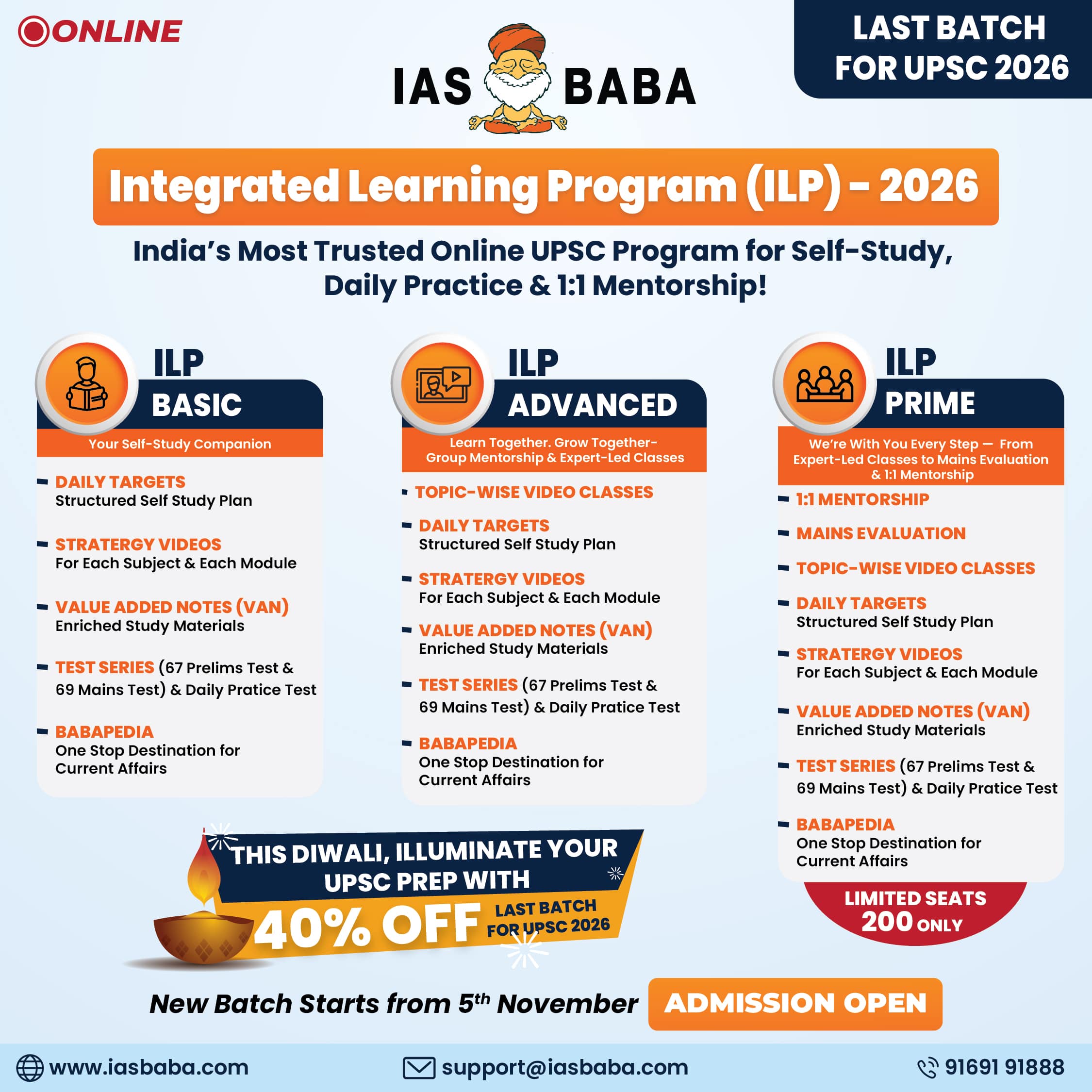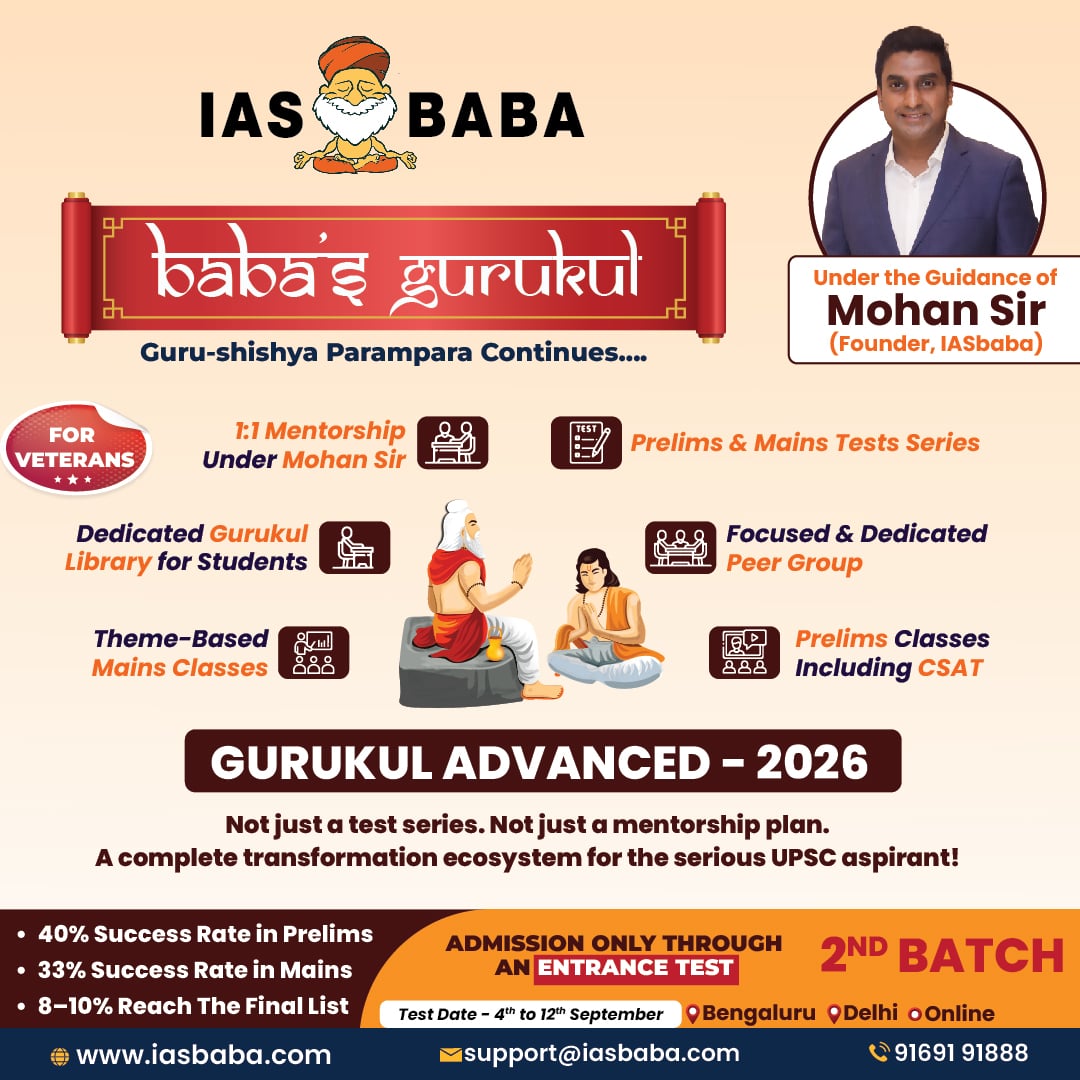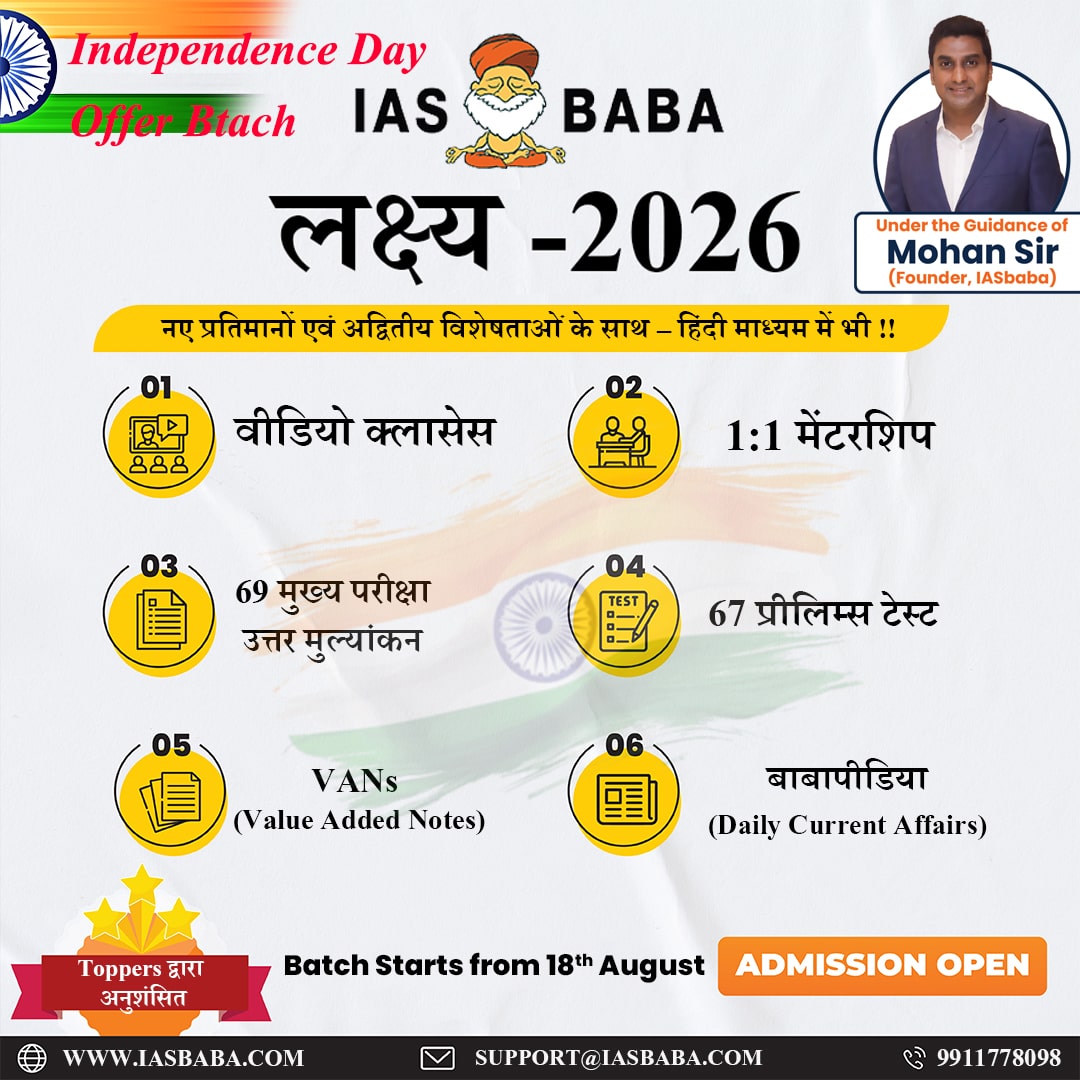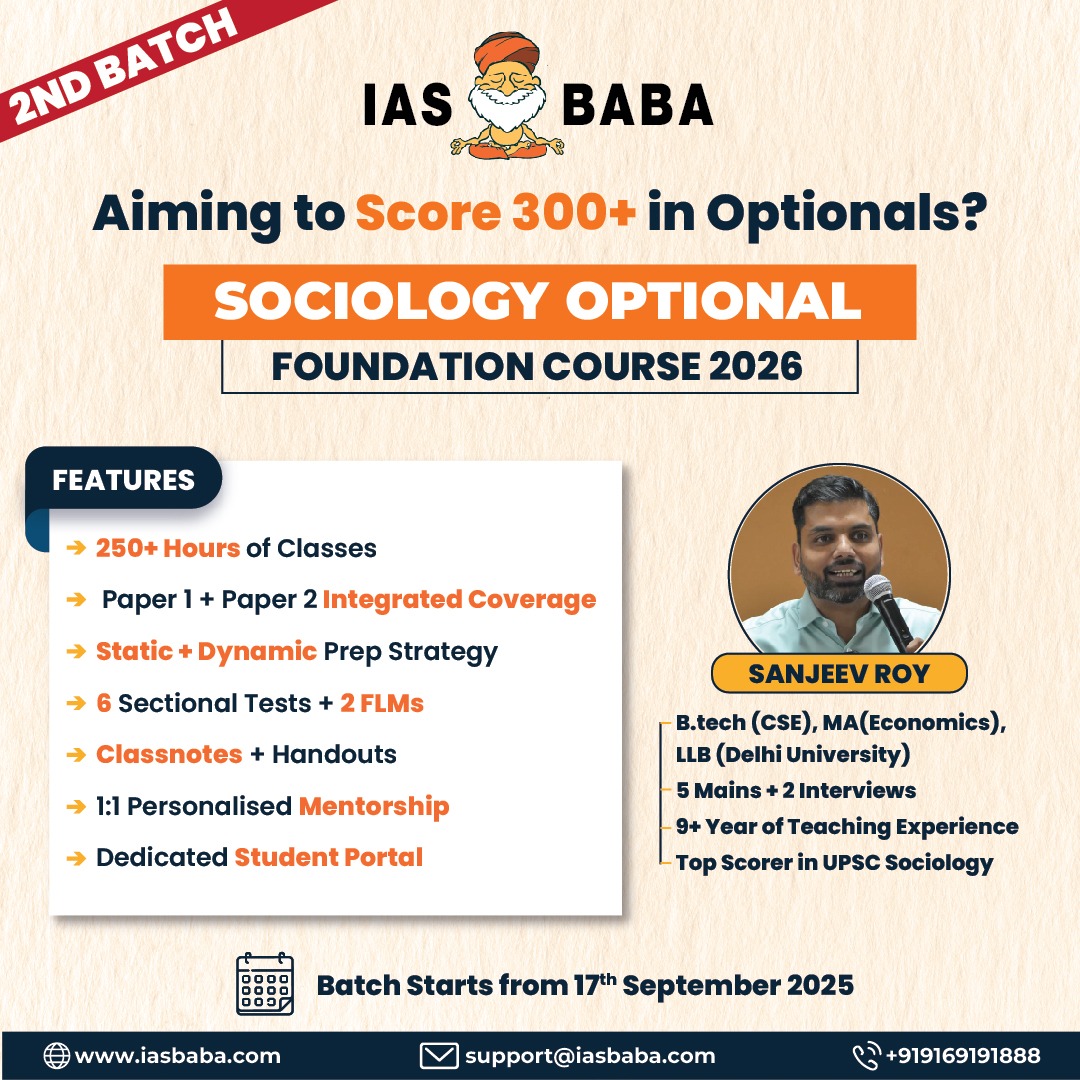IASbaba Daily Prelims Quiz
For Previous Daily Quiz (ARCHIVES) – CLICK HERE
The Current Affairs questions are based on sources like ‘The Hindu’, ‘Indian Express’ and ‘PIB’, which are very important sources for UPSC Prelims Exam. The questions are focused on both the concepts and facts. The topics covered here are generally different from what is being covered under ‘Daily Current Affairs/Daily News Analysis (DNA) and Daily Static Quiz’ to avoid duplication. The questions would be published from Monday to Saturday before 2 PM. One should not spend more than 10 minutes on this initiative.
Gear up and Make the Best Use of this initiative.
Do remember that, “the difference between Ordinary and EXTRA-Ordinary is PRACTICE!!”
Important Note:
- Don’t forget to post your marks in the comment section. Also, let us know if you enjoyed today’s test 🙂
- After completing the 5 questions, click on ‘View Questions’ to check your score, time taken, and solutions.
Test-summary
0 of 5 questions completed
Questions:
- 1
- 2
- 3
- 4
- 5
Information
To view Solutions, follow these instructions:
- Click on – ‘Start Test’ button
- Solve Questions
- Click on ‘Test Summary’ button
- Click on ‘Finish Test’ button
- Now click on ‘View Questions’ button – here you will see solutions and links.
You have already completed the test before. Hence you can not start it again.
Test is loading...
You must sign in or sign up to start the test.
You have to finish following test, to start this test:
Results
0 of 5 questions answered correctly
Your time:
Time has elapsed
You have scored 0 points out of 0 points, (0)
| Average score |
|
| Your score |
|
Categories
- Not categorized 0%
| Pos. | Name | Entered on | Points | Result |
|---|---|---|---|---|
| Table is loading | ||||
| No data available | ||||
- 1
- 2
- 3
- 4
- 5
- Answered
- Review
-
Question 1 of 5
1. Question
Which constitutional provision guarantees the right to form a political party in India?
Correct
Correct Answer: B
Explanation:- (Option B) Article 19(1)(c) of the Indian Constitution guarantees the right to form associations or unions, which includes political parties.
Incorrect
Correct Answer: B
Explanation:- (Option B) Article 19(1)(c) of the Indian Constitution guarantees the right to form associations or unions, which includes political parties.
-
Question 2 of 5
2. Question
Which of the following are characteristic features of traditional Kolhapuri chappals?
- Handcrafted using tanned leather
- Often made without nails or synthetic adhesives
- Typically decorated with intricate embroidery and mirror work
- Designed to last for years with regular use
Correct
Correct Answer: B
Explanation:- (1) Kolhapuri chappals are handcrafted using locally tanned leather.
- (2) Traditional pairs are assembled without nails or synthetic adhesives, relying on stitching.
- (3) Intricate embroidery and mirror work are not typical; this is more common in other regional footwear like Mojaris.
- (4) Known for durability, Kolhapuris can last years if maintained properly.
Incorrect
Correct Answer: B
Explanation:- (1) Kolhapuri chappals are handcrafted using locally tanned leather.
- (2) Traditional pairs are assembled without nails or synthetic adhesives, relying on stitching.
- (3) Intricate embroidery and mirror work are not typical; this is more common in other regional footwear like Mojaris.
- (4) Known for durability, Kolhapuris can last years if maintained properly.
-
Question 3 of 5
3. Question
With reference to the National Turmeric Board, consider the following statements:
- It was established in 2023 under the Ministry of Agriculture and Farmers Welfare.
- The Board includes representatives from central ministries, state governments, farmers, and exporters.
- It aims to enhance value addition and improve global competitiveness of Indian turmeric.
Which of the statements given above is/are correct?
Correct
Correct Answer: A
Explanation:- Statement 1: Incorrect – The Board is under the Department of Commerce, Ministry of Commerce & Industry, not the Ministry of Agriculture.
- Statement 2: Correct – The Board includes members from central ministries, turmeric-producing states, farmers, exporters, and research institutions.
Statement 3: Correct – One of the Board’s key objectives is to promote value addition and enhance India’s export potential in the global turmeric market.
Incorrect
Correct Answer: A
Explanation:- Statement 1: Incorrect – The Board is under the Department of Commerce, Ministry of Commerce & Industry, not the Ministry of Agriculture.
- Statement 2: Correct – The Board includes members from central ministries, turmeric-producing states, farmers, exporters, and research institutions.
Statement 3: Correct – One of the Board’s key objectives is to promote value addition and enhance India’s export potential in the global turmeric market.
-
Question 4 of 5
4. Question
With reference to the Three-Language Policy in India, consider the following statements:
- The policy was first formally introduced through the National Education Policy of 1986.
- Its primary objective is to ensure that every student learns at least two foreign languages for global competitiveness.
- The implementation of the policy is uniform and mandatory across all Indian states.
- The National Education Policy 2020 reaffirms the three-language formula but provides flexibility in its application.
Which of the statements given above is/are correct?
Correct
Correct Answer: D
Explanation:
- Statement 1: Incorrect – The policy was first introduced in 1968, not 1986.
- Statement 2: Incorrect – It promotes Indian languages, not foreign ones.
- Statement 3: Incorrect – Implementation is not uniform; states like Tamil Nadu follow a two-language policy.
Statement 4: Correct – NEP 2020 reaffirms the three-language policy but allows flexibility and no language imposition.
Incorrect
Correct Answer: D
Explanation:
- Statement 1: Incorrect – The policy was first introduced in 1968, not 1986.
- Statement 2: Incorrect – It promotes Indian languages, not foreign ones.
- Statement 3: Incorrect – Implementation is not uniform; states like Tamil Nadu follow a two-language policy.
Statement 4: Correct – NEP 2020 reaffirms the three-language policy but allows flexibility and no language imposition.
-
Question 5 of 5
5. Question
With reference to bonnet macaques and recent wildlife management efforts in India, consider the following statements:
- Bonnet macaques are listed as “Endangered” on the IUCN Red List due to rapid population decline.
- The success of such wildlife birth control programmes requires approval from the Ministry of Environment, Forest and Climate Change (MoEF&CC).
- Bonnet macaques are naturally restricted to the Himalayan region and are rarely found in peninsular India.
Which of the statements given above is/are correct?
Correct
Correct Answer: B
Explanation:
- Statement 1: Incorrect – Bonnet macaques are classified as “Vulnerable”, not “Endangered”.
- Statement 2: Correct – Such programmes must follow wildlife management protocols and receive approval from MoEF&CC.
- Statement 3: Incorrect – Bonnet macaques are native to southern India, especially in peninsular states like Kerala, Tamil Nadu, and Karnataka—not the Himalayan region.
Incorrect
Correct Answer: B
Explanation:
- Statement 1: Incorrect – Bonnet macaques are classified as “Vulnerable”, not “Endangered”.
- Statement 2: Correct – Such programmes must follow wildlife management protocols and receive approval from MoEF&CC.
- Statement 3: Incorrect – Bonnet macaques are native to southern India, especially in peninsular states like Kerala, Tamil Nadu, and Karnataka—not the Himalayan region.
- Current Affairs Quiz, IAS Daily Current Affairs Quiz, IAS UPSC Current Affairs Quiz, IAS UPSC Prelims Quiz, IASbaba's Current Affairs Prelims Quiz, IASbaba's Daily Quiz, IASbaba's UPSC Quiz, Prelims Current Affairs Quiz, UPSC Current Affairs Quiz, UPSC Current Affairs Quiz IASbaba, UPSC Daily Current Affair Quiz, UPSC IAS Daily Quiz



